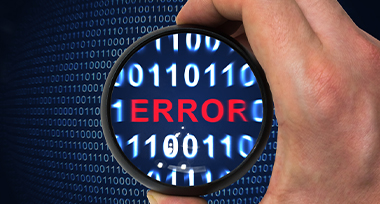What is a Bank Identification Number (BIN) and How Does it Work?
BIN, short for “Bank Identification Number”, stands for “bank identification number” in Turkish. A unique number used by banks to identify and track cards during financial transactions, the BIN represents the first six or eight digits of a 16-digit credit/debit card number. Each bank has its own unique BIN number/code, which serves as a card identifier and contains information ranging from the issuer of the card to the features of the credit/debit card.
Bank Identification Number (BIN): Card Identification and Payment Security
Online payment transactions have become more common, increasing the importance of credit card information. On the surface of the credit card, you can typically find the name, expiration date, IBAN, security code, and card number. During this process, the question “What is a Bank Identification Number (BIN)?” is often raised by users. The card number, which consists of 16 digits and contains the bank identification number, is also important. If we look at the definition and importance of the bank number, we can say that it is the number that indicates which institutions issued the card within the card number. The Bank Identification Number (BIN) ensures that payment transactions are completed smoothly. It also provides financial security, safeguarding the users.
Working Principle of the Bank Identification Number
Offering a security system between sellers and buyers, the bank ID number basically consists of a simple working principle. The working principle of the BIN starts with the buyer entering their card details during payment transactions. After this process, account and card information is accessed and confirmed through the BIN inquiry system. This query, which is an important application within the bank systems, ensures the financial security of the parties and instantly transmits personalized installment options services to the user with the account information query. In general, the working principle of the bank identification number is to ensure the security and functionality of card transaction networks.
Uses of the Bank Identification Number
Card transaction networks are the system that carries out the service giving and receiving transactions between the buyer and the seller. This system utilizes the bank identification number for the fast progress and security of the process. Especially in the financial sector, the bank identification number is used effectively to prevent fraud. The usage areas of the bank identification number in payment systems are not limited to providing security. Bank identification numbers find the opportunity to benefit from the payment options given to the person by the bank by quickly querying the person’s account information. Again, preventing identity theft and security breaches are among the areas of use of the bank identification number.
Security Measures of the Bank Identification Number
Especially in online payment channels, bank identification numbers are important; they consist of various security measures such as data protection, fraud prevention, and protecting the cardholder’s identity. This prevents identity theft and malicious uses. Bank identification number security measures ensure the reliability of the payment method, allowing parties to transact securely. While doing this, encryption, data security, and identity verification steps are applied.
The bank identification number is found as a code within the card number on the front of payment cards. These numbers, which are critical for payment methods, are defined and presented to the cardholder when opening a bank account.
Bank identification numbers, which serve as identifiers in financial transactions, offer many advantages to their users. Especially in online payments, it provides early prevention of negative situations such as identity theft and fraud in order to control payment security. The security of bank identification numbers is provided by the provider. Malicious approaches by providers can lead to data leakage and privacy issues. However, the risk of this is quite low.
In order to prevent misuse of user data, ensure user trust and maintain financial stability, payment card providers pay attention to compliance with legal regulations. The control of legal obligations of providers and banks is carried out by the financial control mechanisms of the country in which they are located.
Bank identification numbers are used in many different fields such as health, insurance and e-Commerce. The functions of use also vary according to these sectors. For example, in e-Commerce, they are used by vendors to track customers’ order and payment processes, while in healthcare, they are used to manage records and invoicing.
Popüler Ürünler

Virtual POS
Receive your payments safely, easily and quickly through your e-commerce site.

Physical POS
Take face-to-face single or installment payments from all cards with a single device and contract.

Payment Links
Create easy payment links to receive remote payments even if you do not have a website.
Benzer Blog İçerikleri İlginizi Çekebilir

Virtual POS Error Codes and Solutions
Virtual POS error codes prevent e-commerce activities from continuing uninterruptedly. It also creates a loss of reputat

10 Profitable Business Ideas for Those Who Want to Start Their Own Business
No matter how difficult economic conditions become, many people dream of starting their own business. Young, women, midd

How to Sell Products Abroad?
Selling products abroad is advantageous both in terms of reaching a wider audience and earning income in foreign currenc


